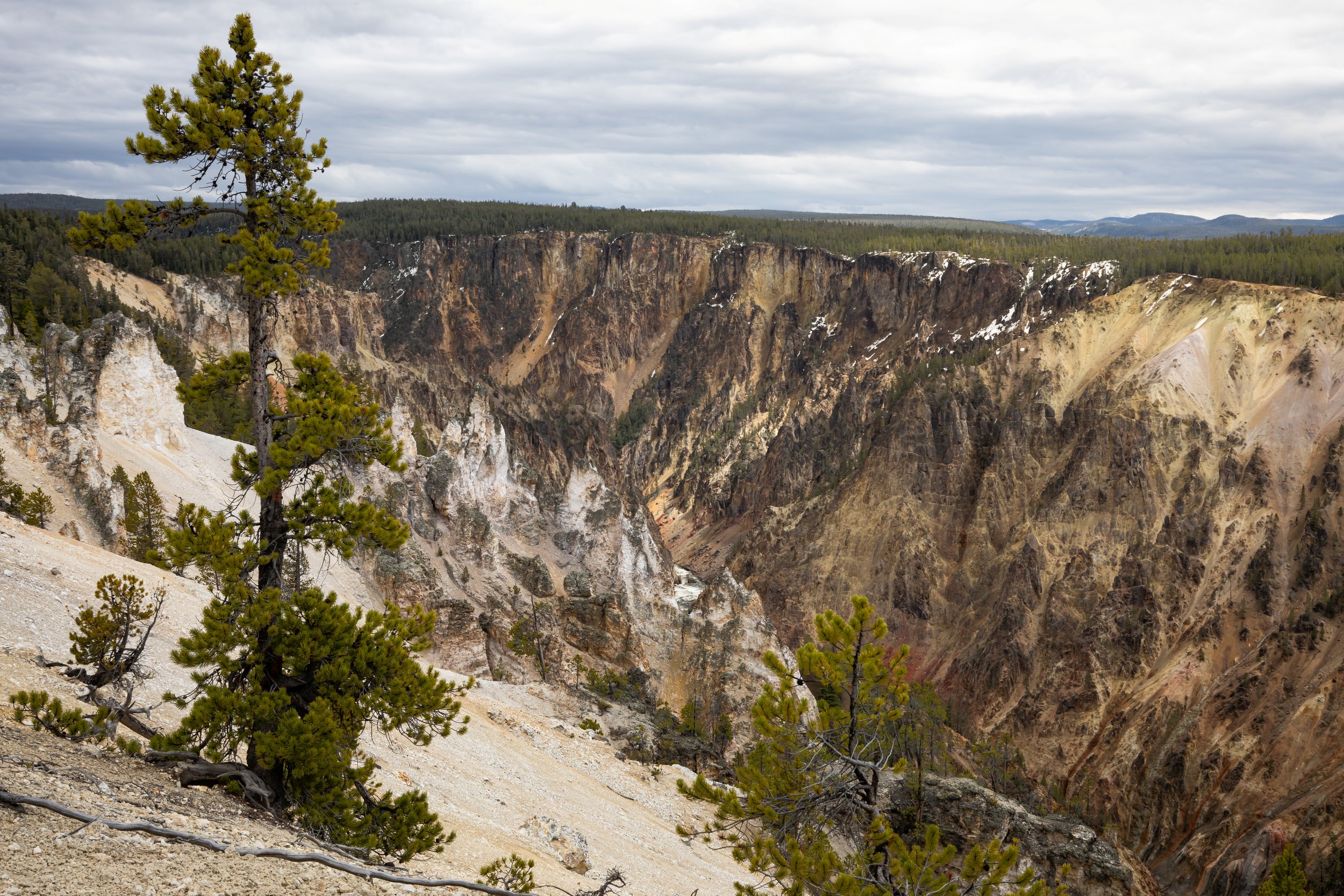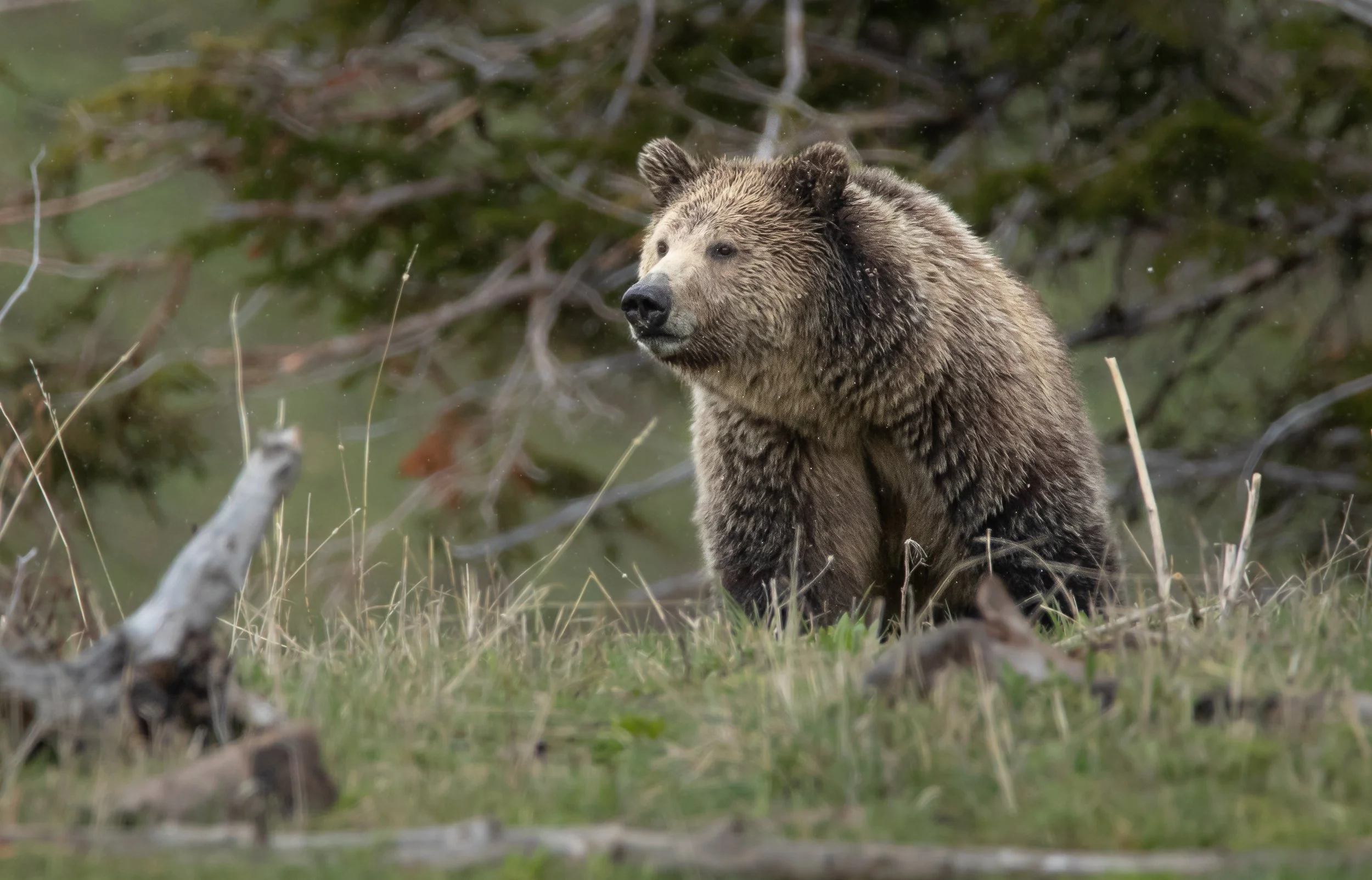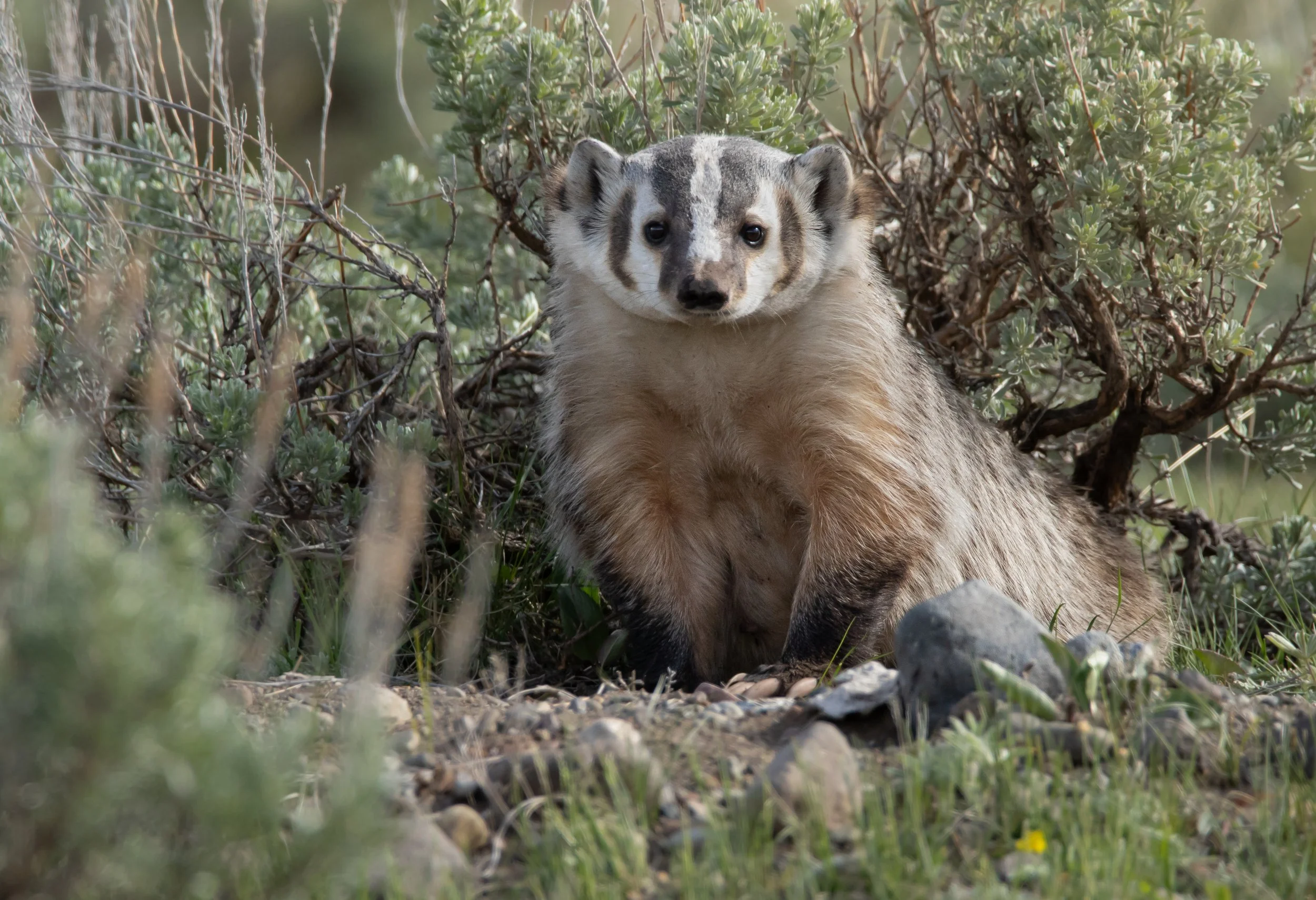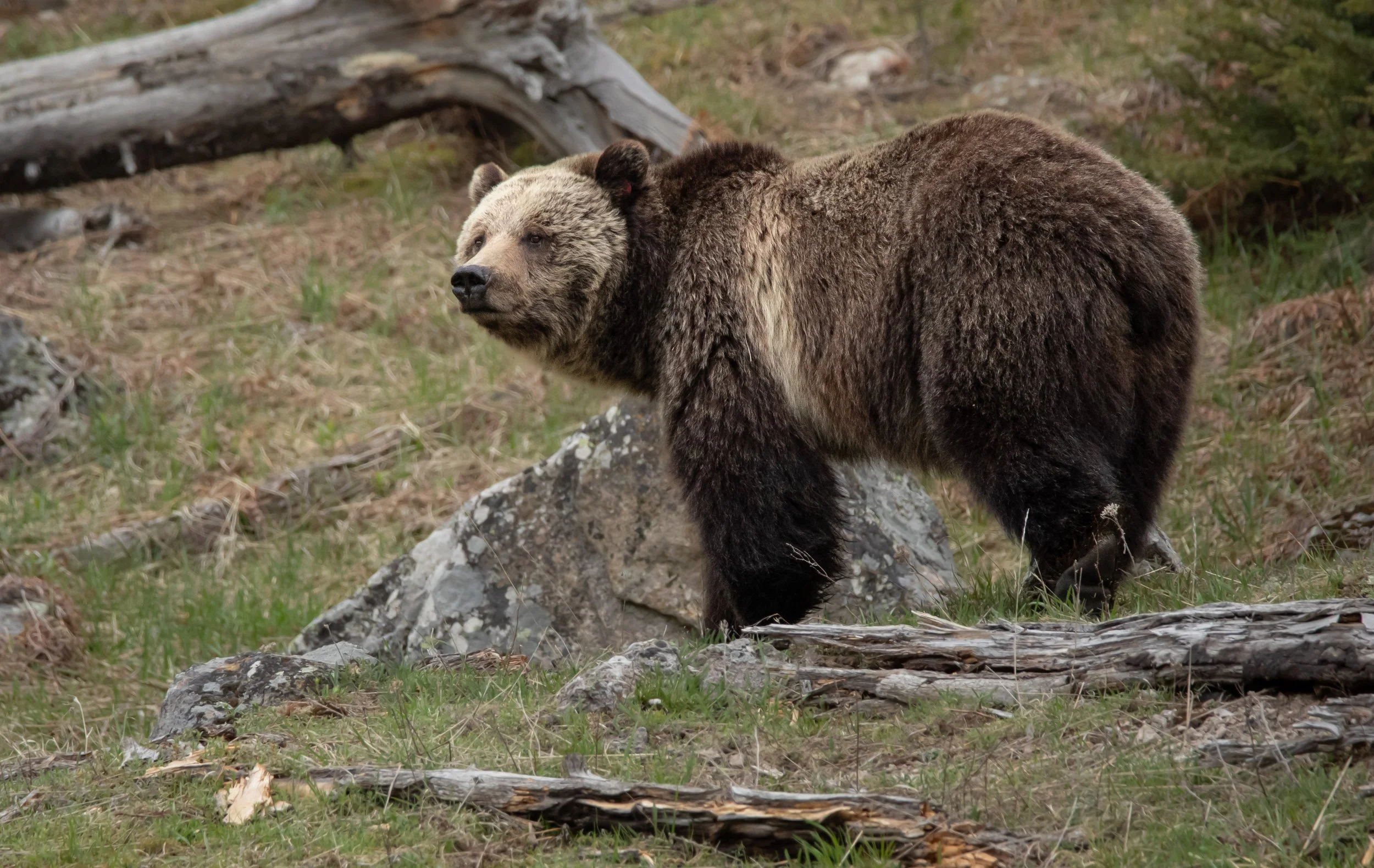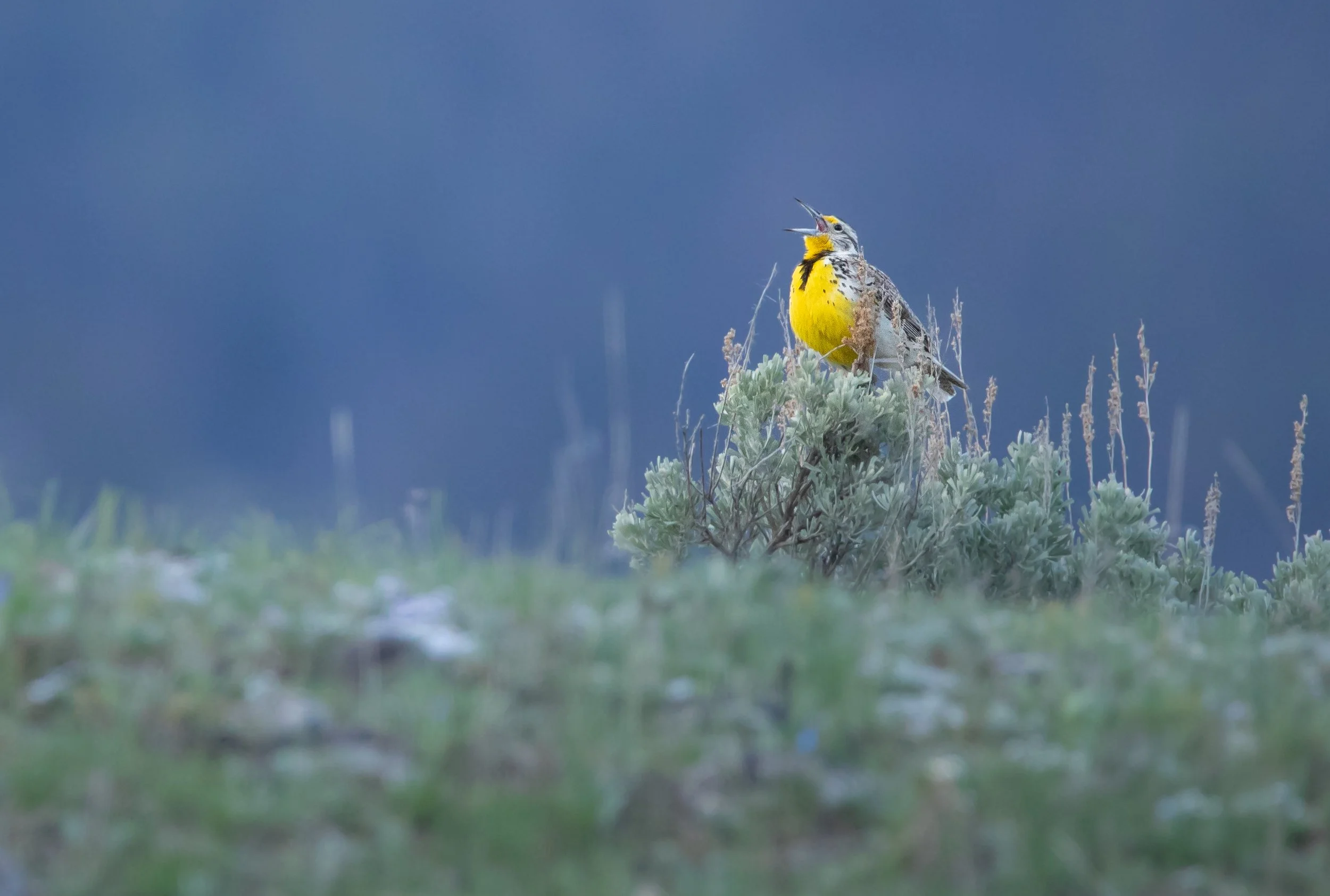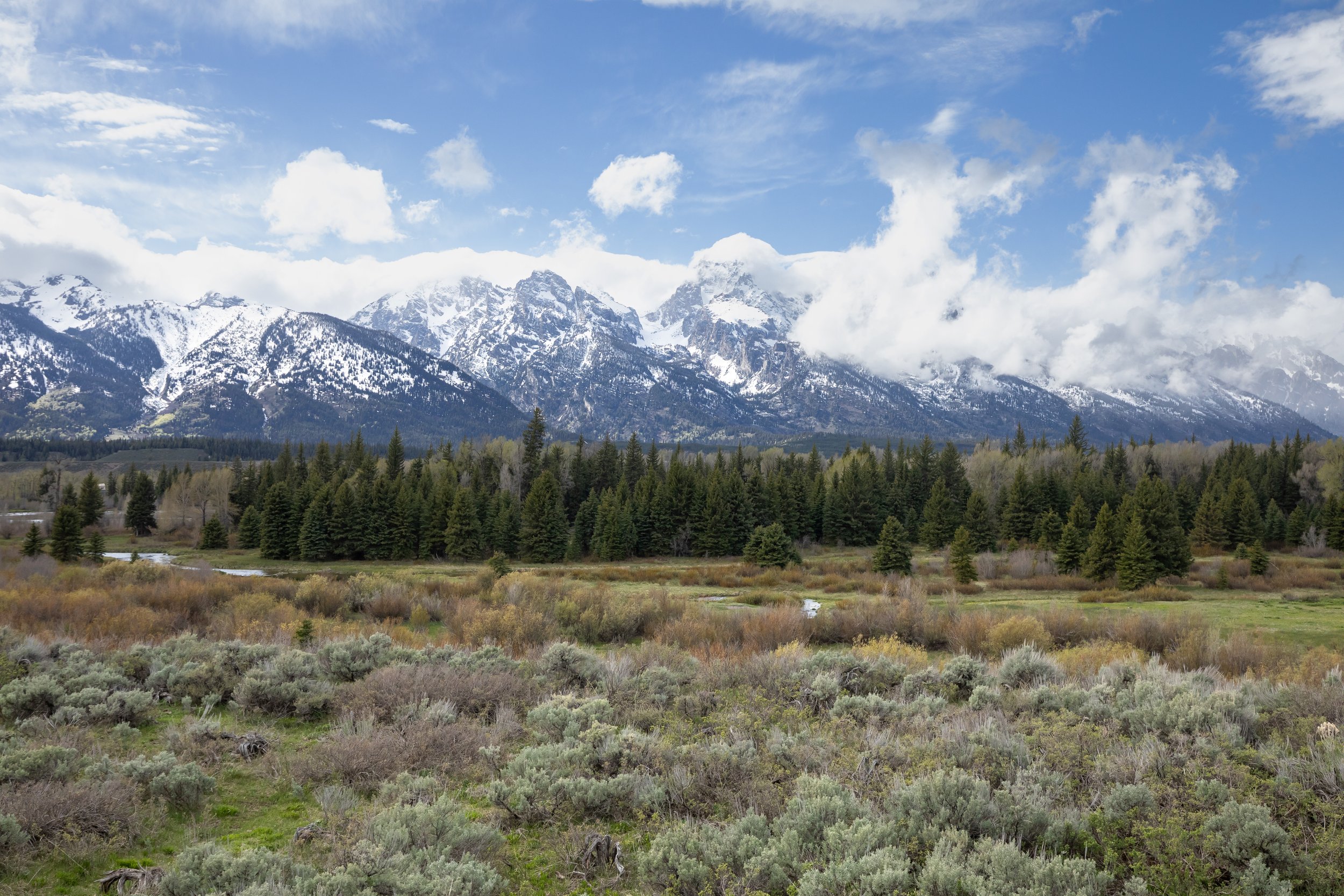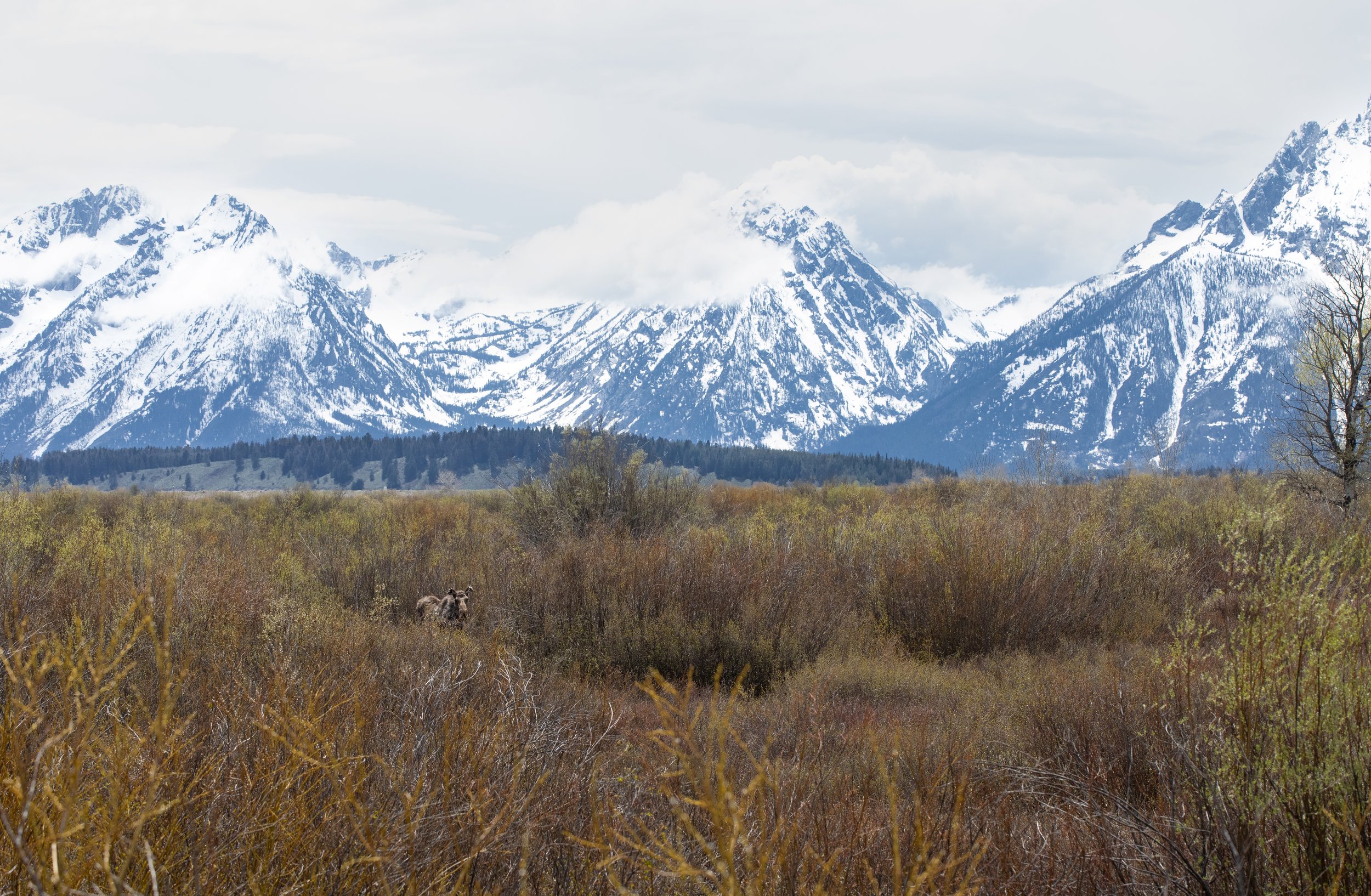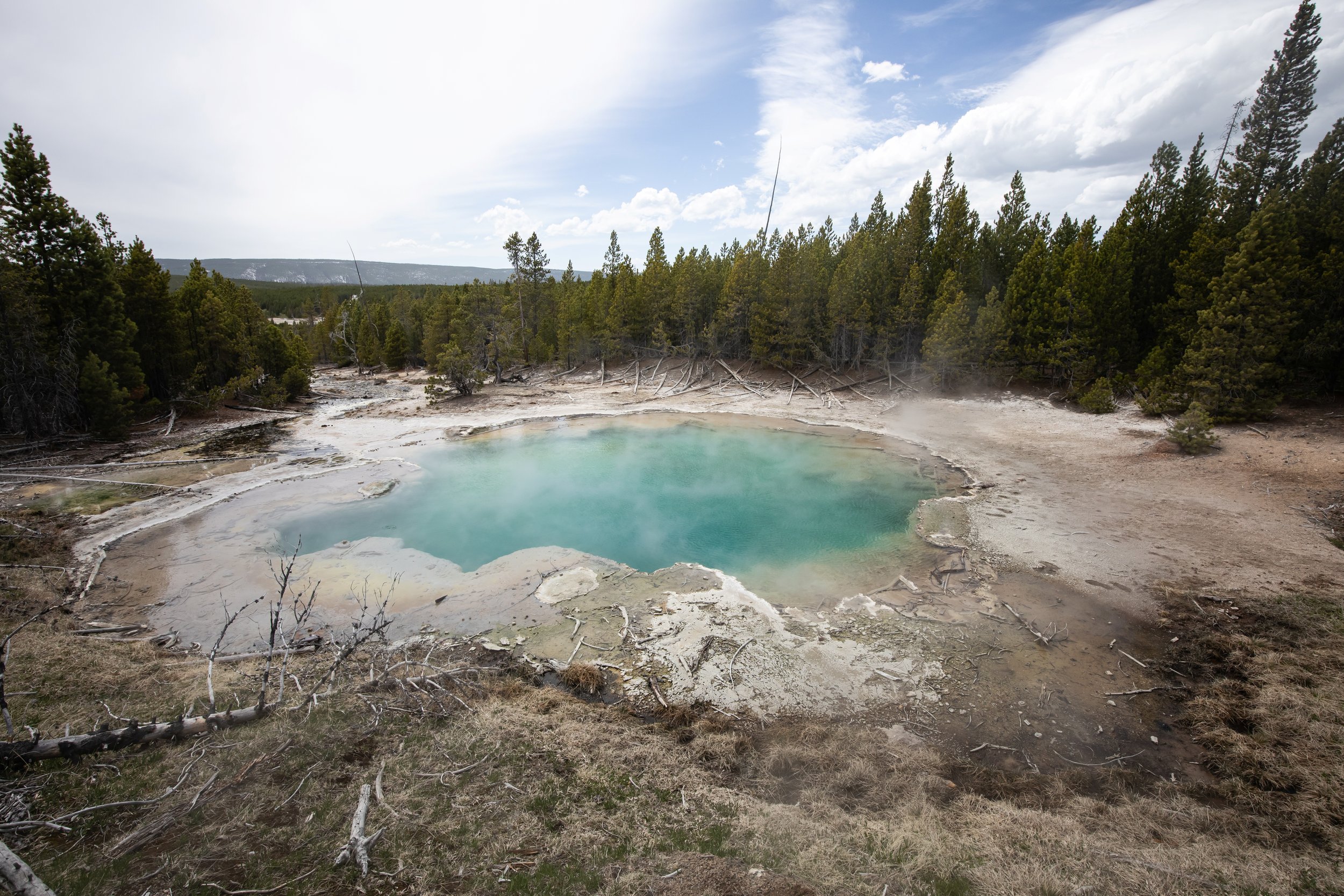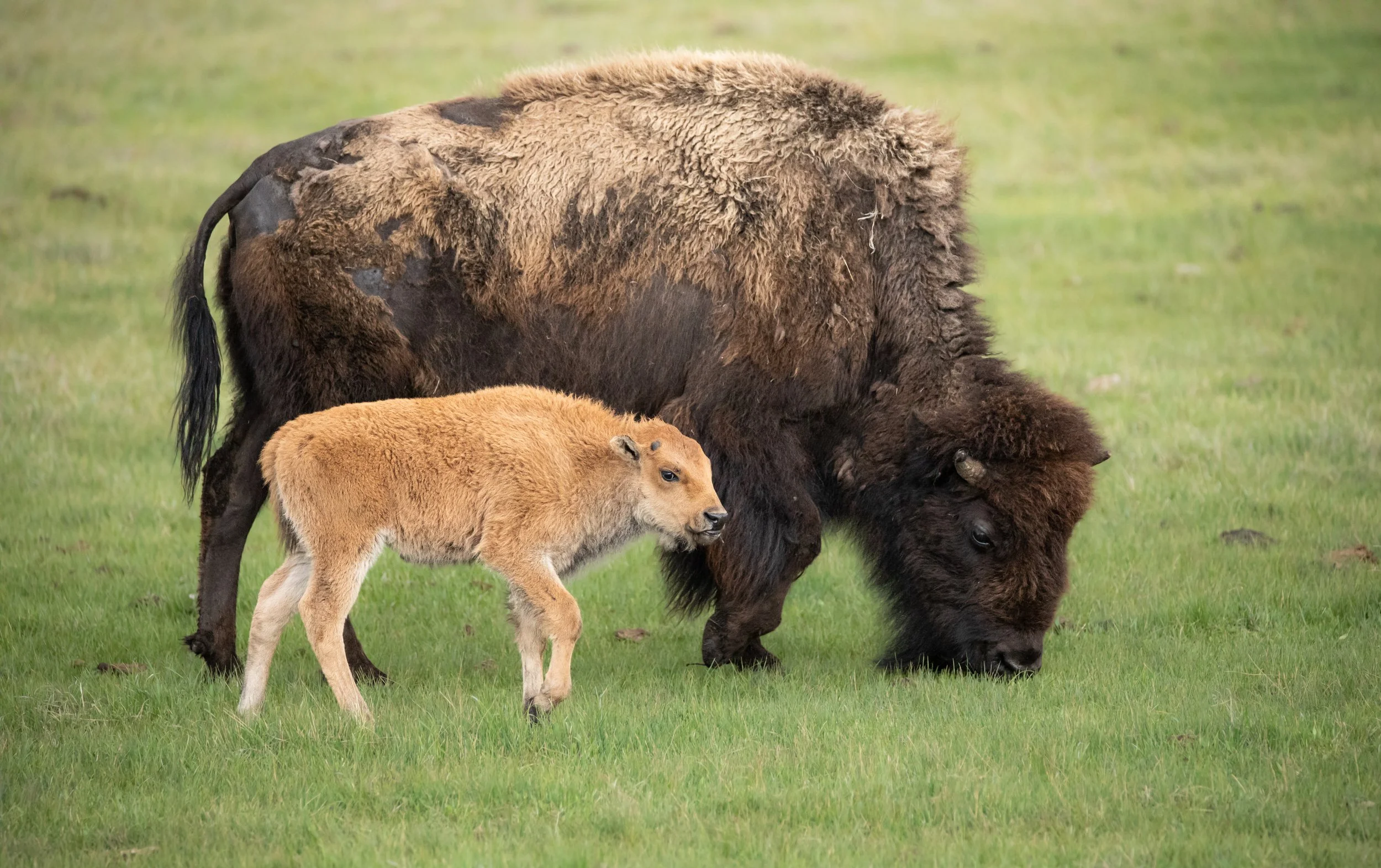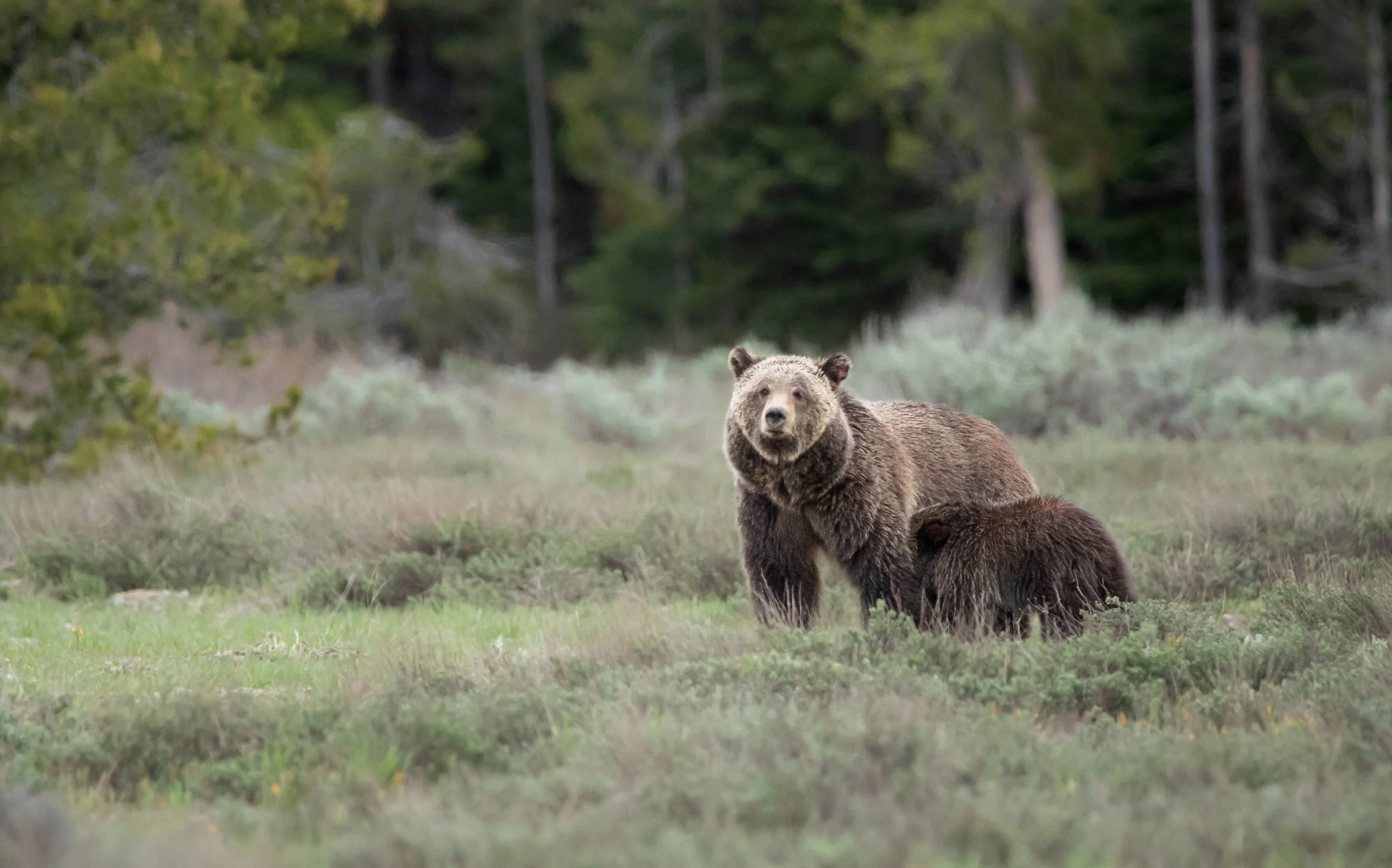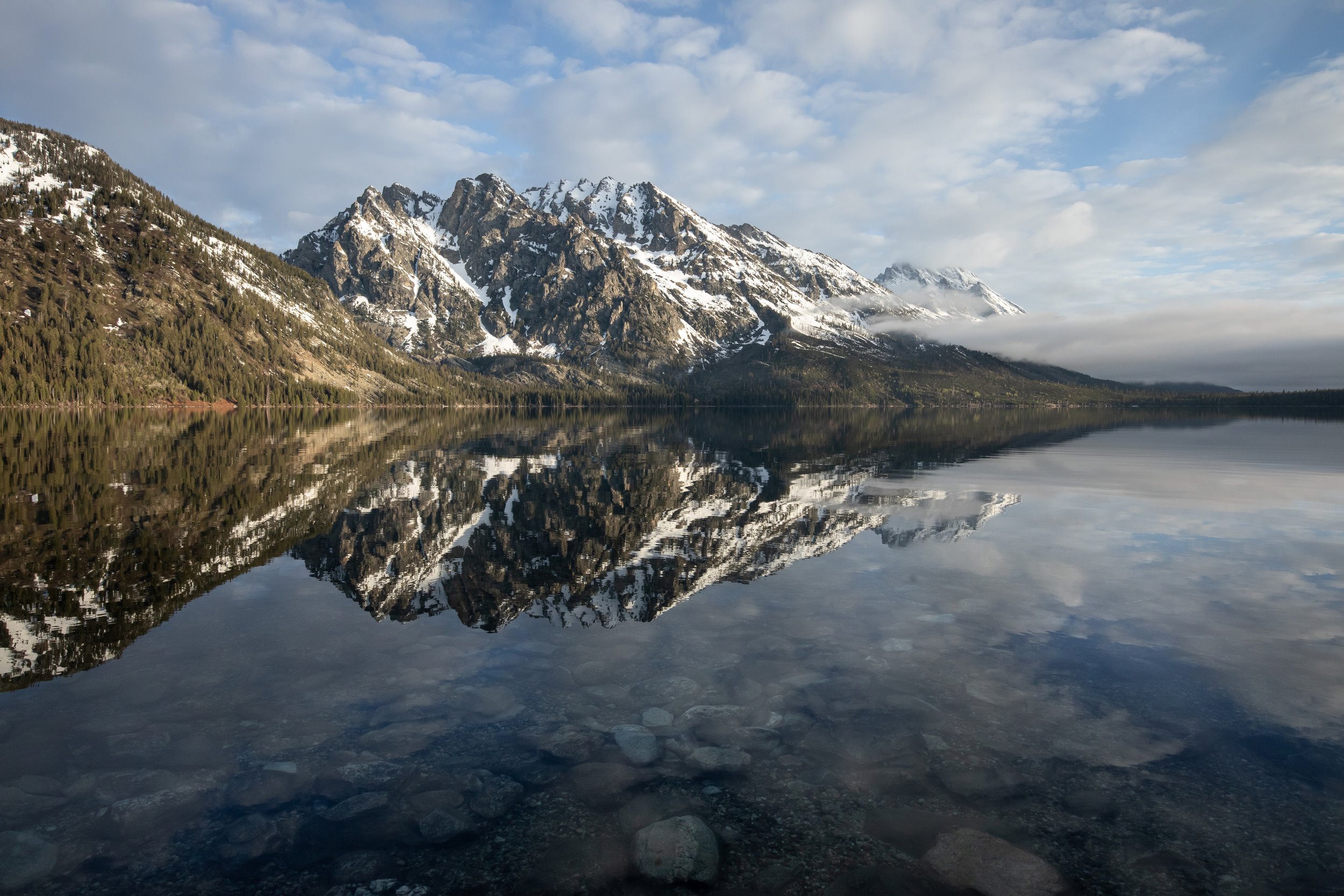
Greater Yellowstone Ecosystem
“It is the place where the center of the earth finds an exit and gives us a glimpse of its soul.” - Anne Coe (1998)
Quick Facts (Yellowstone)
Where: Montana, Idaho, Wyoming
Size: 2,221,766 acres (3,472 square miles)
Yearly Visitors: 4.74 million
Economic Output: $903 million
Image: A bald eagle (Haliaeetus leucocephalus) surveys the landscape of Biscuit Basin. On July 23rd, 2024, Black Diamond Pool exploded, sending debris flying and destroying the boardwalk. This is a powerful reminder of Yellowstone’s unpredictability.
Quick Facts
(Grand Teton)
Where: Wyoming
Size: 310,000 acres (485 square miles)
Yearly Visitors: 3.6 million
Economic Output: $984 million
Image: Standing above the famous Schwabacher Landing, you cannot help but feel awestruck at the expansive Teton valley.
A landscape so profound it inspired the formation of the National Park Service.
When people hear the words “National Park,” they probably envision a scene of American bison (Bison bison) trotting in front of the Old Faithful geyser. Yellowstone National Park has become synonymous with the NPS and American conservation, and it has set the precedent for what national parks can be. However, becoming the nation’s first National Park was not an easy journey.
The story of public lands is a winding one, beginning long before a European foot ever touched the American West. Indigenous peoples lived in what would later become Yellowstone for millennia. To Congress, this mysterious valley of fire remained a rumor until the mid 19th century. Some mountain men may have traversed it between 1806-1810, though these claims are largely unfounded. The discovery of gold in nearby Virginia City (Montana) in 1866 attracted troves of people, from miners to businessmen to politicians. Soon, it became evident that this fabled Yellowstone valley needed to be surveyed. In September of 1869, a hesitant expedition set forth from what is modern day Bozeman.
Image: The Grand Canyon of the Yellowstone, one of the park’s many incredible sights that continues to inspire millions today.
Image: Artists’ Paintpots is an overlooked yet incredible example of Yellowstone’s geothermal landscape.
Of all of Yellowstone’s unique qualities, its hydrothermal features are perhaps some of the most intriguing, as they dictate the entire ecosystem. As recently as 631,000 years ago, a massive volcanic eruption created the 35 by 45 mile-wide Yellowstone caldera. The magma that rests only a few miles below the earth’s crust nurtures over 10,000 geothermal features (including geysers, hotsprings, fumaroles, and mudpots), about half of those known worldwide! No matter where you are in the park, you will quickly learn that nothing stays stagnant. When we visited the Norris Geyser Basin, we noticed a bubbling hotspring with a still-living tree in the middle. We later learned that this feature reappeared after decades of inactivity only a week before our arrival. This is yet another one of Yellowstone’s characteristic laws - the landscape is forever changing. Despite the harsh conditions of the park’s hydrothermals, many species actually thrive within the heat and acidity. Dozens of species of microorganisms (including bacteria and algae) are at home in hot springs, creating a vibrant spectrum of color. A whole new domain of thermophiles, known as Archea, were first described in the park in 1977.
Image: A close-up of Grand Prismatic Spring, showcasing the stunning colors created by thermophilic organisms. They are arranged in columns, just like a forest canopy!
The large mammals that inhabit Yellowstone are just as charismatic. As one of the only intact temperate ecosystems left in the United States, the megafauna of the park have lived there for thousands of years. Herds of American bison (Bison bison) mosey through Lamar and Hayden valleys, nature’s premiere landscape architects. Gray wolves (Canis lupus), famously reintroduced into the park nearly 30 years ago, are a cornerstone species that have restored much of Yellowstone’s ecology. Grizzly bears (Ursus arctos) thrive under expert management from NPS biologists. Though a series of wildfires in the 1980s destroyed most of their preferred fir habitat, moose (Alces alces shirasi) can still be found in scattered numbers. These, along with many others, create a suite of megafauna that can be found nowhere else. Yellowstone, in almost every conceivable way, is unrivaled.
Though Hayden also explored and documented the Teton range, Grand Teton National Park would not be established until 1950 following a controversial history. The Homestead Act of 1862 encouraged people to move out west, though Europeans wouldn’t settle in modern-day Jackson Hole until 1884. Homesteading wasn’t easy in this part of the Rockies; winters were long and miserable, the soil didn’t take well to agriculture, and a depression in 1920 devastated local communities. As luck would have it, wealthy Easterners began traveling to Jackson Hole in the hopes of getting the real “cowboy experience.” Thus, the ‘20s were the golden age of dude ranching. Ecotourism boomed, and hotels, restaurants, gas stations, and racing tracks began popping up all over Jackson Hole. Concerned for the future of the valley, local folk gathered in 1923 to put a preservation plan in motion, hoping to keep the Teton range as a “museum on the hoof.” When John D. Rockefeller toured the area in 1926, he was so moved by the scenery that he purchased 35,000 acres with the intent of donating it to the federal government so that it may become a national park. Locals were worried about this proposition at first. If the land was federal, they lost out on vital tax revenue. Rockefeller would donate the land in 1949 regardless, and Congress would officially establish it as a national park in 1950.
Image: The Beryl Springs Sow (far left) with her two-year old cubs in May 2025.
Thankfully, the men on this initial expedition were well-written publicists, and they were able to capture the imaginations of all who read their report. They wrote of a kaleidoscopic valley carved by a powerful river, a lake so grand it seemed to stretch on forever, and an otherworldly basin of geysers and steam. They proclaimed Yellowstone’s wonders as unsurpassed, quickly inspiring an additional expedition the following August. Soon enough, this “wonderland” was the talk of the entire country, stirring Congress to formally coordinate a $40,000 survey led by geologist and director of the U.S. Geological and Geographical Survey of the Territories, Dr. Ferdinand Vandeveer Hayden. He swiftly assembled an all-star team of zoologists, topographers, mineralogists, geologists, entomologists, and meteorologists. Famously, he also invited renown artist Thomas Moran and photographer William Henry Jackson. Written word was one thing, but Hayden understood and valued the importance of visual record. The Hayden Expedition was the final push America needed to recognize the grandeur of Yellowstone and, working off of a bill that protected the Yosemite valley as a state park years earlier, President Ulysses S. Grant signed the Yellowstone Park Act into law on March 1st, 1872. The world finally had its first National Park.
Images: A few scenes from the Norris Geyser Basin, one of the largest and hottest in the world. Each color represents a different species of thermophilic microorganism, many of which are endemic!
Microorganisms are not the only living beings who find refuge in the hydrothermals. Many species of insect and plant rely on the heat to get them through Yellowstone’s frigid winter seasons. The springs create a microbiome similar to a miniature tropical rainforest, supporting an array of adapted life. Insectivorous birds (such as mountain bluebirds) are attracted to these areas, as are large ungulates (bison and elk) because of the ample food throughout the year. Even grizzly bears (Ursus arctos) hang around geyser basins, despite their sensitive sense of smell. The Beryl Springs sow is well known for this behavior, raising her cubs in a labyrinth of fumaroles and geysers. The landscape of Yellowstone is harsh, but for those species who have evolved to withstand it, it is also rewarding.
Image: A mother and calf pair of American bison (Bison bison). These giants are ecosystem architects, shaping the rolling sagebrush valleys of Yellowstone.
Image: An early morning sunrise at Jenny Lake, one of Grand Teton’s most visited spots (and for good reason).
When you look out on the iconic Teton range, you are met with breathtaking sights around every river bend. Even though the mountains are made of very old rock (~2.7 billion years), they have only been forming for 10 million years. You could say they are adolescents, especially when compared to ancients like the Appalachians, hence their rocky, jagged peaks. The Tetons are dramatic, rising abruptly out of the earth and commanding respect. Most peaks tower 7,000 feet over the valley floor, but the crown jewel is the 13,770 foot summit of the Grand. No matter where you go in the national park, the Tetons stand unwavering on the horizon.
The picturesque valley is home to many of the GYE’s most charismatic species, including elk, pronghorn, bison, bald eagles, grizzly bears, and, most famously, moose. The powerful Snake River provides pristine willow and semi-aquatic habitat for the world’s largest deer. An estimated 400-500 live in the Jackson Hole herd, nearly double the amount that live in Yellowstone.
Image: The Grand is the crown jewel of the Teton range with an impressive 13,770 foot summit. Though there is dispute about who first climbed to the peak, William Owen’s expedition was the first to be documented on August 11th, 1898.
Image: A female moose seems small compared to the towering Teton range at Oxbow Bend.



